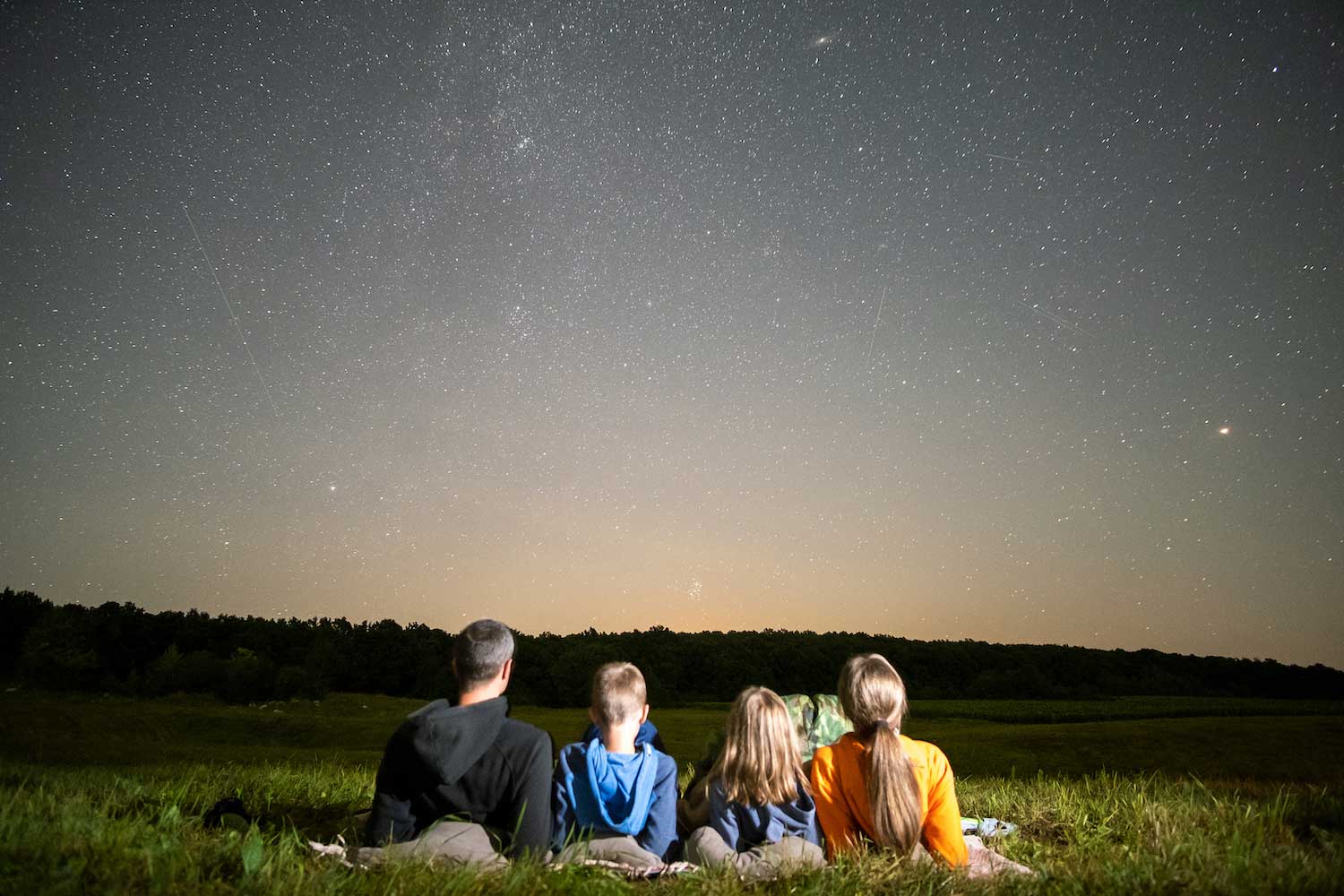Streaks of light in the night sky could be shooting stars not fireworks

The night sky will be streaked with light come July, and it's not just the Fourth of July fireworks that will be putting on a show. Once the smoke clears from the annual fireworks displays, a quieter show will fill the sky when meteor shower activity returns.
Meteors can be seen throughout the year, but activity is highest during meteor showers. After a few months without an active meteor shower, July brings with it not one, not two but three meteor showers, including the start of what is the most popular meteor shower of the year, the Perseids.
The activity gets underway with the start of the alpha Capricornids, which runs from July 7 to Aug. 15, the American Meteor Society reports. Peak activity will be at the end of the month, on the night of July 30 into 31, but this meteor shower is a weak one and doesn't usually produce more than a handful of shooting stars an hour.
Viewing opportunities are better with the Perseids and southern delta Aquariids meteor showers, which begin on July 14 and 18 respectively. The Perseids, which will last until Sept. 1, is widely considered one of the best if not the best meteor shower of the year, in part because the peak viewing occurs in the warm summer months when it's more pleasant to be outdoors at night, the meteor society reports.
This year, the Perseids will peak the night of Aug. 11 into 12. At their peak, the Perseids can produce between 50 and 75 shooting stars per hour, according to the meteor society. The moon will be about 44% full and it will set at 1 a.m. Aug 12, so it won't put too much of a damper on the show.
Want to view the Perseids from the preserves? The Forest Preserve is hosting viewing parties at three different preserves from 8 to 10 p.m. Sunday, Aug. 11, the night of peak activity. Join us at Forked Creek Preserve, Hickory Creek Preserve and Whalon Lake to see if you can make a wish upon a shooting star.
Just a few days after the Perseids gets underway, the southern delta Aquariids will follow suit. This meteor shower is shorter than the Perseids, running from July 18 to Aug. 21. It will peak the night of July 29 into 30. The delta Aquariids is considered a strong meteor shower, but it is best viewed from the Southern Hemisphere. Activity is more muted north of the Equator because the radiant — the point at which the meteors appear to come from — is lower in the sky.
The night sky in July also offers a good opportunity to view Mercury, our nearest neighbor in the solar system. It will reach its eastern elongation on July 22 and will be visible in the sky that evening, according to SeaSky.org.
While Mercury is the closest planet to Earth, it is not always easily visible because it gets washed out by surrounding light, Space.com reports. The best viewing opportunities occur when it reaches its greatest separation, or elongation, from the sun. These elongations occur several times a year, about every 116 days, based on how long it takes Mercury to orbit the sun.
Mercury has both eastern and western elongations. Eastern elongations can be viewed in the evening hours, just after the sun sets, while western elongations are best viewed in the predawn hours before the sun rises, Space.com reports. On July 22, Mercury will be at its greatest eastern elongation, so look for it soon after the sun slips below the horizon.
July's full moon will be July 21, hitting its fullest point in the early morning hours, at 5:17 a.m. The July full moon is called the buck moon, so named because deers' antlers are typically growing in quickly at this time of year, according to The Old Farmer's Almanac. Other names for the July full moon used by Native peoples include the berry moon, salmon moon, thunder moon and feather moulting moon.
